She was seen as one of the most beautiful and elegantly dressed queens that England ever had, but after the death of Queen Alexandra in 1925, many of her dresses were sold or disappeared.
Now they are coming to light, one by one, including the latest discovery: a lovely velvet evening dress embellished with beads and sequins that had been carefully stored in a woman’s attic for years.
It happened because of an appeal made last year by curators of a royal exhibition at the Fashion Museum in Bath, asking for the return of missing dresses made for Queen Alexandra, wife of King Edward VII. Alexandra, born a princess of Denmark, is the great-grandmother of Elizabeth II.
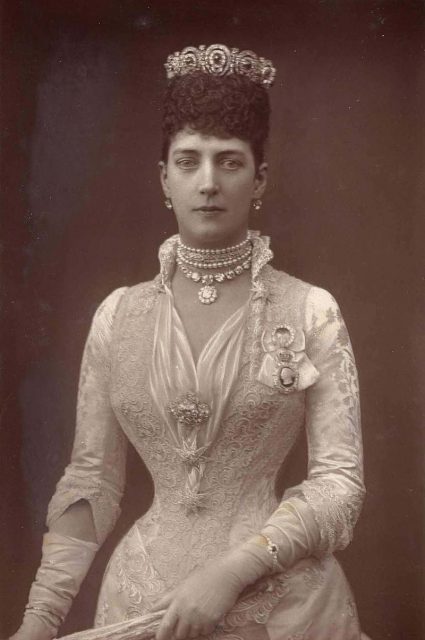
The Fashion Museum of Bath, putting together a “family tree” of royal fashion, focused on Queen Alexandra, Queen Mary, Queen Elizabeth the Queen Mother, and Princess Margaret.
Reported The Telegraph: “With loans from the Royal Collection and many items from its own archives, the museum will showcase the stories of how the dresses came to light, and how thrifty Queens had them adapted to suit their changing lifestyles.”
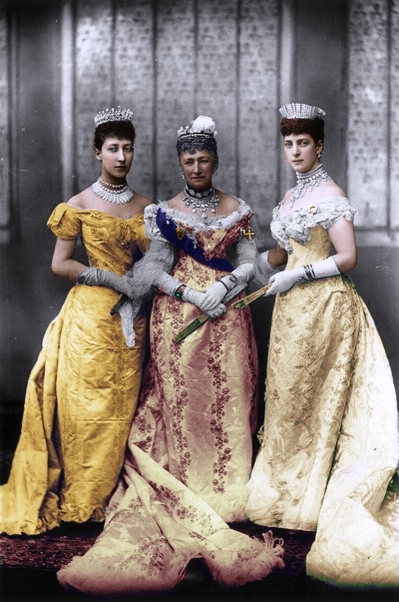
Curator Elly Summers said in the article: “In the 1960s, we had a donation of two dresses, both belonging to Queen Alexandra. They were chosen from a selection of eight that were found at an old shop in London called Baroque, which was on Margaret Street.”
Saying, “We’d love to know what happened to the rest of them,” Summers asked for people to come forward with Queen Alexandra’s dresses coming from that shop or anywhere else.
In response, Francesca Counsell Risius got in touch with the city’s Fashion Museum, saying she had a dress that she believed was a bought as a royal curiosity for her great aunt’s shop in Tunbridge Wells in the 1950s.
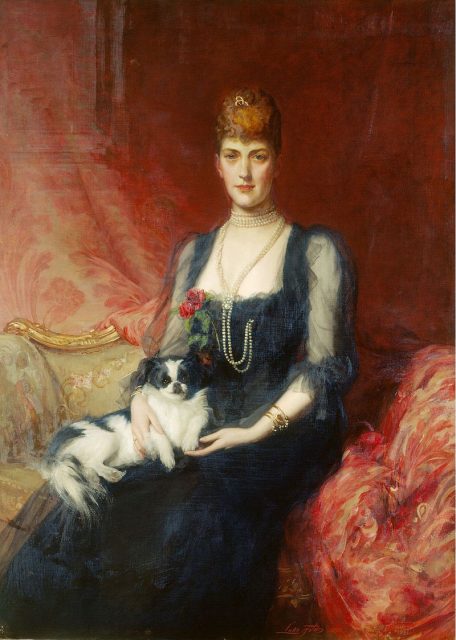
The evening dress was designed for the Queen by London dressmaker Barolet in the early 1900s and it bears her signature black and gold name tag sewn into the waist tape. Many dresses were produced by French dressmakers at the time. Barolet was English and also dressed actresses of the Edwardian era, including Ethel Irving for a number of productions between 1911 and 1914.
Risius told the BBC that the dress was her great aunt’s prized possession.
“She gave me the dress in the late 1960s and I’ve kept it in a box ever since,” she said. “I’ve carefully tried it on a couple of times, so has my daughter and occasionally we’ve taken it out of its tissue paper to show interested friends and family.”
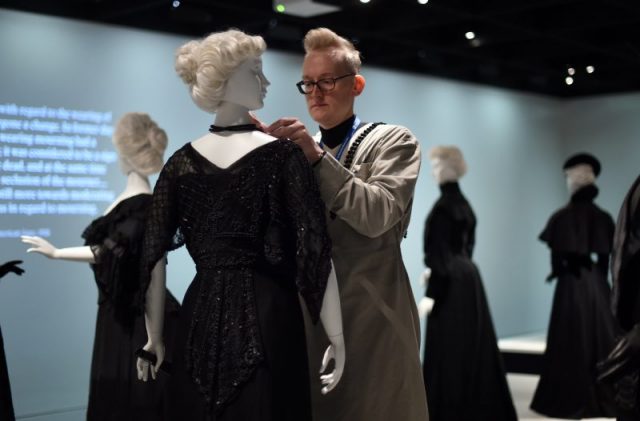
The dress’s authenticity was verified by dress historian Dr. Kate Strasdin, who said she was “delighted” that the dress had come to light.
“This dress is a fabulous find, not just because of its beauty, but because of what the dress reveals about Alexandra’s fashion choices,” she said. “Placing orders with smaller, less well-known dressmakers such as Barolet shows a measure of Alexandra’s determination to dress apart from her peers.”
Related Video: Famous People and their Famous last Romantic words
https://youtu.be/GHoSqYj3awk
Alexandra was born on December 1, 1844, in the Yellow Palace in Copenhagen. Her sister Dagmar would marry a Russian prince and become Czarina, the mother of the last of the Romanovs, Nicholas II. Prince Philip, the Duke of Edinburgh, is also a member of the Danish royal family. His great-grandfather was Christian IX of Denmark, Alexandra’s father.
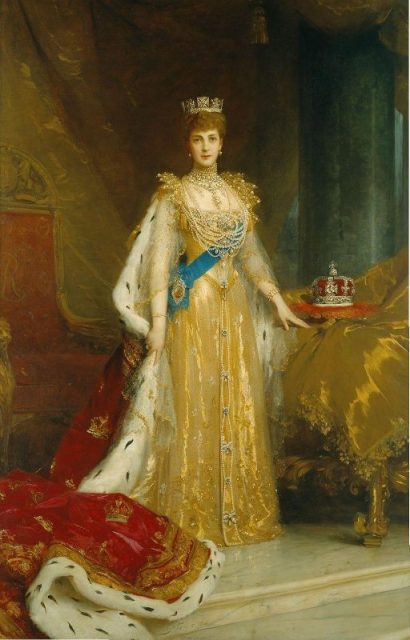
Queen Victoria and Prince Albert, worried that their oldest son, called Bertie, was becoming too wild, were eager for him to marry. Alexandra was considered the most eligible princess of Europe. The families arranged for Alexandra and Bertie to meet when she was just 16 and he was 19.
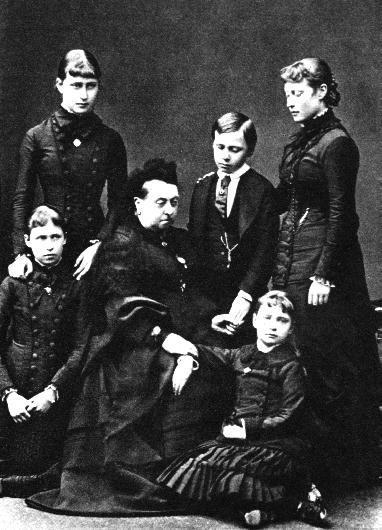
Prince Albert was particularly determined that his son should marry Alexandra. After Albert’s death, which devastated Victoria, the marriage went ahead. Alexandra was celebrated for her beauty and slender figure–she had a 22 inch waist–and as Princess of Wales, she became a fashion leader.
“Alix made the new court the leader of fashion,” wrote Jane Ridley in The Heir Apparent. “Whatever she wore, other women rushed to follow.”
The couple had six children. However, throughout much of the marriage, Bertie continued to take mistresses and lead a playboy life. At the same time, Alexandra became increasingly deaf.
In 1901, Victoria died, and Bertie became King Edward VII and Alexandra his queen consort. She was popular with the public. She was photographed more than many other other queens and queen consorts of the 20th century.
Alexandra was passionately opposed to Germany and is thought to have influenced her husband in his attitude toward his nephew, Kaiser Wilhem.
Her husband died in 1910, and she continued her public duties as Queen Mother until she became too ill. She died on November 25, 1925 of a heart attack.
Alexandra’s dresses were not kept and preserved but mostly dispersed, although the reason is not clear. The black evening dress that has been donated to the Fashion Museum of Bath will be displayed until spring of 2019.
